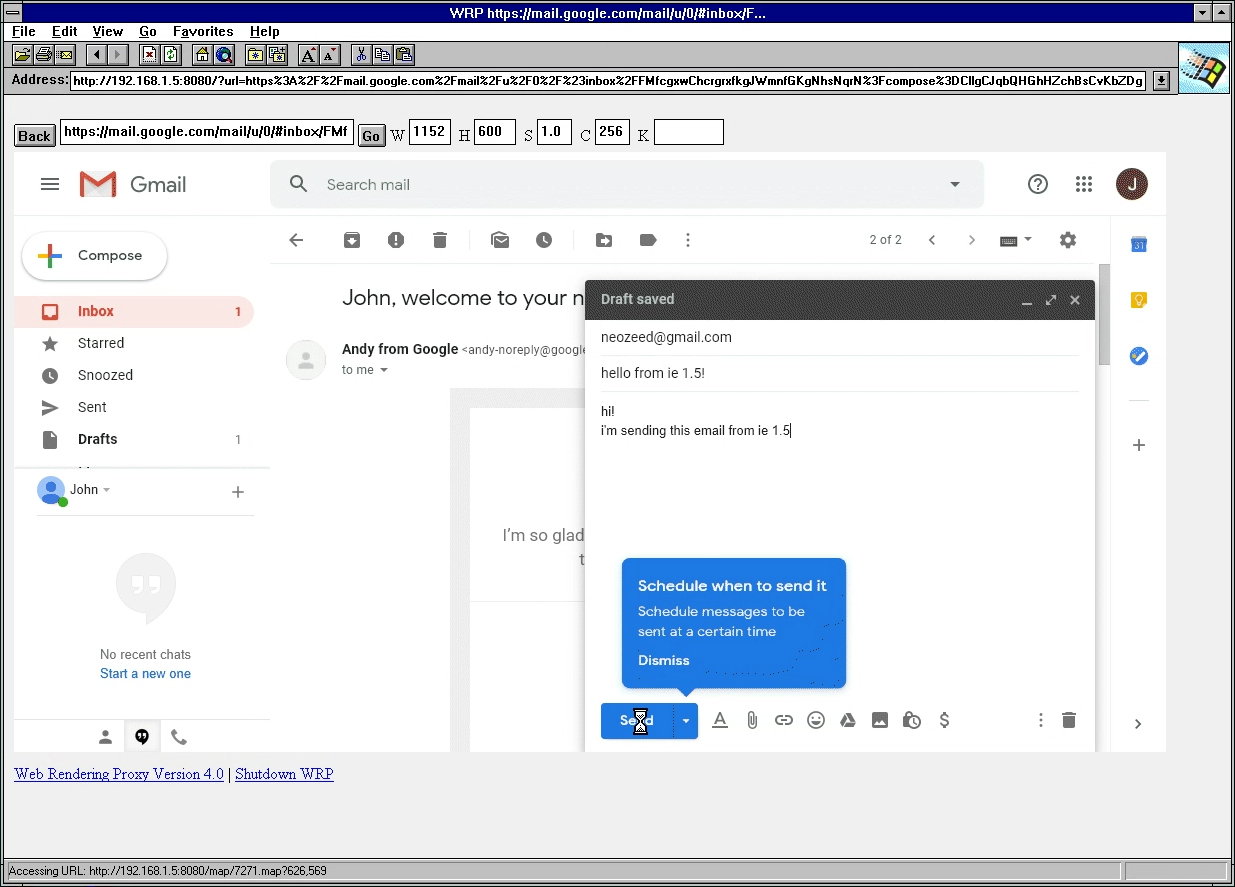mirror of
https://github.com/tenox7/wrp.git
synced 2025-08-06 00:25:56 +00:00
733efaea56c9e4797e6cc78c9ede465ea6af694d
WRP - Web Rendering Proxy
A HTTP proxy server that allows to use historical and obsolete web browsers on the modern web. It works by rendering the web page in to a GIF image. It sends mouse clicks via ISMAP and keystrokes from a text box form input.
Current Status
- This is a new reimplementation in GoLang/ChromeDP.
- Beta but fully supported an maintained.
- Currently works as browser-in-browser. A real http proxy mode is being investigated. Check issue #35 for updates.
- As of 4.1 supports clicking on non-link elements (eg. cookie warnings) and sending keystrokes. Yes, you can login and use Gmail or play web based games from any old browser.
Usage
- Download a WRP binary and run it on a machine that will become your WRP server.
- Point your legacy browser to
http://address:portof WRP server. Do not set or use it as a "Proxy Server" (yet). - Type a search string or a http/https URL and click Go.
- Adjust your screen width/height/scale/#colors to fit in your old browser.
- Scroll web page by clicking on the in-image scroll bar.
- Send keystrokes by filling in T input box and pressing Go.
Flags
-l listen address:port, default :8080
-h headed mode, display browser window
-d chromedp debug logging
More info and screenshots
- http://virtuallyfun.superglobalmegacorp.com/2014/03/11/web-rendering-proxy-update/
- http://virtuallyfun.superglobalmegacorp.com/2014/03/03/surfing-modern-web-with-ancient-browsers/
Credits
- Uses chromedp, thanks to mvdan for dealing with my issues
- Uses go-quantize, thanks to ericpauley for developing the missing go quantizer
- Thanks to Jason Stevens of Fun With Virtualization for graciously hosting my rumblings
Legal Stuff
License: Apache 2.0
Copyright (c) 2013-2018 Antoni Sawicki
Copyright (c) 2019 Google LLC
Description
Web Rendering Proxy: Use vintage, historical, legacy browsers on modern web
browserchromechrome-devtoolsheadless-chromeimagemaplegacy-browsersproxyrenderingvintage-computerswebwww
Readme
Apache-2.0
1.7 MiB
Languages
Go
82.8%
HTML
13.3%
Makefile
2.7%
Dockerfile
1.2%
